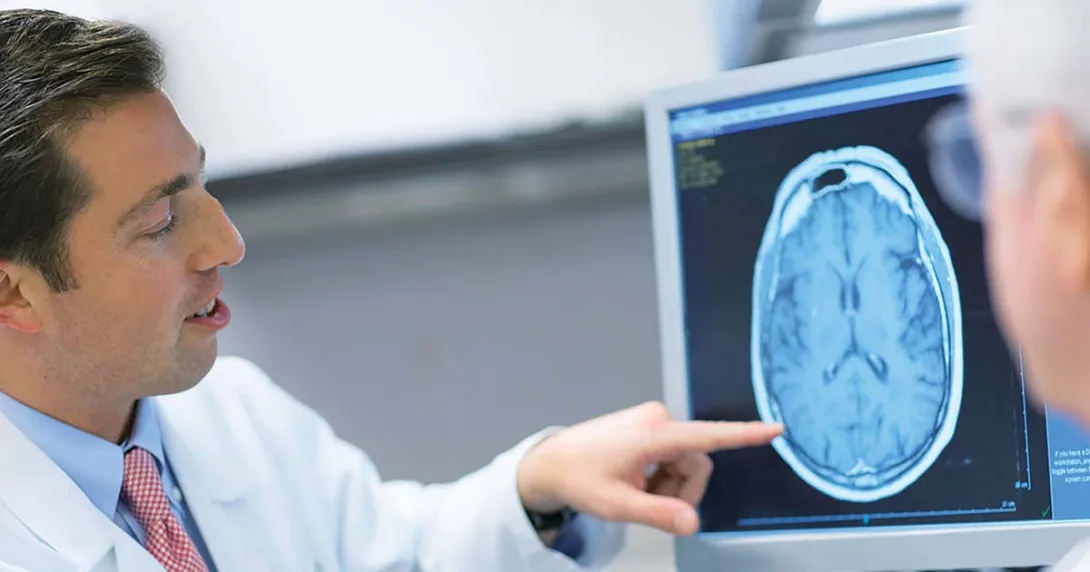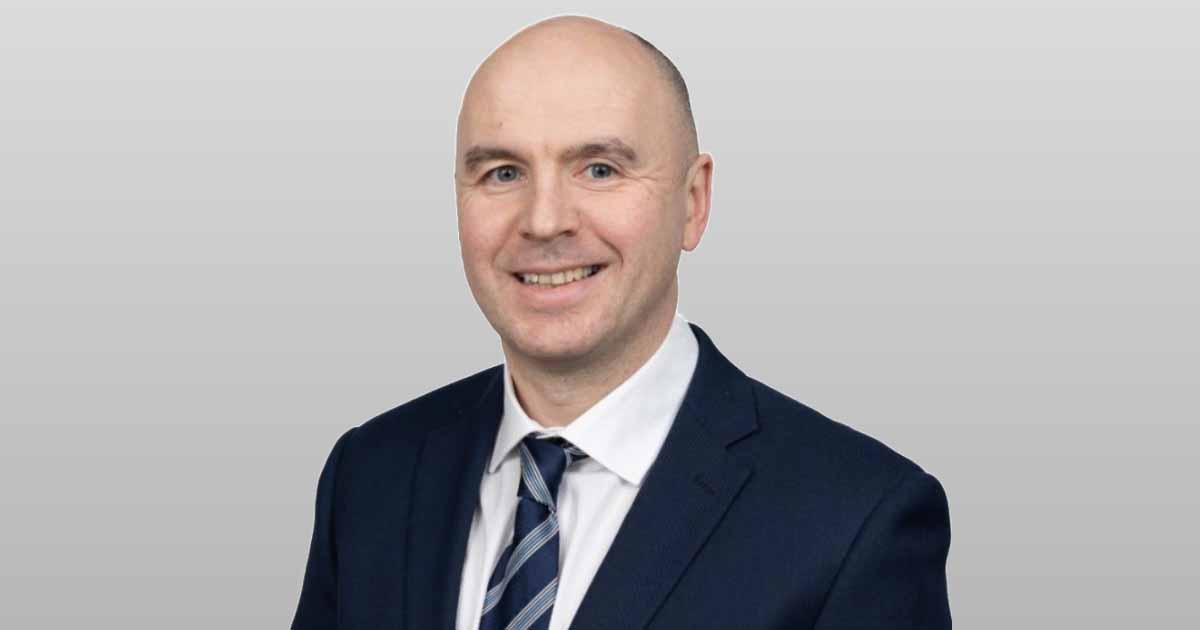
The Clinic by Cleveland Clinic, an initiative with telemedicine technology and services company Amwell, has been getting life-changing results from leading-edge virtual care.
The Clinic has been providing virtual second opinions by the many top specialists at the renowned healthcare organization. The platform connects patients to more than 3,500 specialists across Cleveland Clinic without the need for the patients to travel to a major medical center.
Misdiagnoses contribute to more than 800,000 deaths or disabilities each year in the U.S., Johns Hopkins has found, costing the healthcare system hundreds of billions, beyond the human cost.
Data from the Clinic by Cleveland Clinic shows that in 67% of cases patients receive a new diagnosis or treatment recommendation after seeking a second opinion.
Neurology second opinions via telehealth
"Over the past five years, I've conducted dozens of neurological virtual second opinions, and from the patient's perspective, the most value is the interaction with the provider and the report that comes at the end with our advice," said Dr. Robert Bermel, a neurologist and director of the Mellen Center for Multiple Sclerosis Treatment and Research in the Neurological Institute at Cleveland Clinic.
Bermel provides virtual second opinions nationwide through The Clinic by Cleveland Clinic.
"To get to that point, there is a lot of background work and interaction with multiple physicians that builds patient confidence in our recommendations – whether it's a diagnosis or treatment change, or just confirmation they're on the best path already," he continued.
"We liken these second opinions to 'pressing the easy button' for patients, thanks to the seamless work done on their behalf."
Virtual second opinions are transforming neurological care in the country, Bermel said.
"Virtual second opinions are elevating care across the country for patients with these conditions," he explained. "Picture how this works: A patient has some symptoms, gets an MRI scan of their brain done locally, and the MRI scan comes back with some abnormalities. The patient immediately goes to their network of friends or physicians asking: 'What does this mean?'
"They also typically go online and start searching for answers," he continued. "'Do I need to worry about this? Do I need to do something now? Are these abnormalities connected to my symptoms, or is this a completely separate thing?'"
More patients, same number of specialists
This is occurring in a setting where the average wait for a neurologist is quite long nationwide. Neurological disease is becoming more common, but the number of neurologists remains relatively stagnant. Maybe a patient gets a brain MRI scan that identifies potential MS in the report. Nowadays, people have access to the reports quickly in their patient portals, and they do not want to wait to take action.
"The differential between when the information is available to the patient and when they're able to access specialty resources locally can be months," Bermel noted. "Is somebody going to wait six, eight or twelve weeks of sleepless nights wondering: 'What am I going to do about this? What does this mean? Do I have MS as this report says?'
"Patients are looking for other options as they wait to see a neurologist," he continued. "They're looking to engage sub-specialty resources as quickly as possible for an expert opinion."
MS is one of the most common neurological cases Bermel sees, and the frequency is increasing. People don't know exactly why that is – if it's exclusively due to environmental factors like diet and lifestyle, or if it's due to what's called the hygiene hypothesis, where people all lead much cleaner lifestyles. Whether that leads to a higher tendency to develop autoimmune conditions like MS is still being studied.
And MS definitely has some geographic spread. Climates around the Great Lakes and in the Midwest tend to have higher incidences. In the Pacific Northwest where there is less sunlight in winter, people tend to have lower vitamin D levels, which is associated with higher risk of MS.
There also are populations in sunny and warm climates like the Middle East where the prevalence of MS is still quite high. There are many question marks about MS and why it happens to certain people. The answer is probably a mix of genetic and environmental factors, Bermel said.
Multiple sclerosis and virtual care
"MS can benefit from a virtual second opinion because first, it's a life-changing diagnosis with very high stakes," he explained. "Second, it does not typically change or progress day-by-day, week-by-week, and so you often feel like things are going OK when they are not.
"You need to make treatment decisions with an expert early on to have good long-term outcomes," he continued. "And third, the field has changed a lot. All of neurology is beginning to go through this. MS started out with zero FDA-approved effective therapies in the early 1990s and now has evolved to more than two dozen approved therapies, some highly effective."
There are lots of choices about when to start a medication, which one to start, and then how to monitor and make sure it's working and safe. Because of the availability of information, patients are much more sophisticated and want more engagement from very high-level experts about their care. MS is the prototype, and other neurological diseases might follow the same path.
"Alzheimer's disease has very quickly evolved to a biological diagnosis that is not just an expert scratching their chin in a room pondering if this is Alzheimer's," Bermel said. "They're diagnosing and treating based on biological tests in the blood, spinal fluid and brain scans. That's relatively new, and it's driven by the fact that biological therapies are available to modify the course of the disease now.
"Parkinson's disease is another one where having access to high-level expertise really matters," he continued. "If you're in a local area that does not have a large population of sophisticated providers, a Parkinson's patient may go without high-level therapies like deep brain stimulation when they could potentially benefit from that therapy in a limited window of time. No patient wants to miss that window."
A good candidate for special care?
Patients in these cases need to know if they are a good candidate and if they should have it done – which is where virtual second opinions come in.
"Spinal cord demyelination is an autoimmune attack that can signal the onset of MS and can be caused by other autoimmune conditions, either systemic conditions like lupus or infectious conditions like Lyme Disease," Bermel explained. "The pathological process often presents with numbness or weakness from the trunk or waist down, maybe on one side, sometimes on both sides of the body.
"It can feel like someone is tightening a band or a belt around you with impaired motor function, and it can present with very scary conditions like bladder or bowel dysfunction," he continued. "That's because all the nerves that control that area come through the spinal cord. It's very critical to identify the cause because MS, lupus or an infectious condition can have similar symptoms and require much different treatments."
Cleveland Clinic has experts in all of these different areas. It even has a full-time expert in sarcoidosis, which is a granulomatous disease that can affect the spinal cord and cause lesions that look like spinal demyelination. Virtual second opinion cases are routed to the most qualified experts to provide accurate assessments and reliable recommendations.
Helping combat the access problem
Another major issue that can be tackled by virtual second opinions is access. Plain and simple, it takes a long time to see a doctor. The wait time for any neurologist is measured in months, not weeks and certainly not days. Then, what if a patient finally sees a neurologist and he or she studied primarily stroke or epilepsy? Neurology is a broad field.
"Patients need access to somebody with expertise in their particular issue," Bermel concluded. "The virtual second opinion program helps to close those two gaps – access and expertise – and brings both right into the patient's home, cutting costs by reducing travel expenses and missed work."
Follow Bill's HIT coverage on LinkedIn: Bill Siwicki
Email him: bsiwicki@himss.org
Healthcare IT News is a HIMSS Media publication.
WATCH NOW: Mount Sinai's new CDIO offers an inside look at her very full plate


